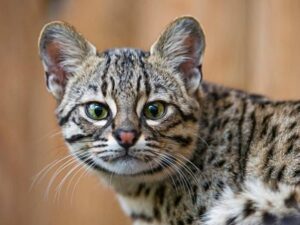Hydration and electrolytes for horses
An adult horse is composed of approximately 62% to 68% water. Although a horse can go without food for a long period of time, if it loses between 8% and 10% of its body fluid in extreme conditions, it is already in danger.
There are many situations that lead to enormous loss of sweat and can have serious clinical consequences. If not treated quickly and properly, they are often the main cause of death during equestrian competition or after exercise. It usually occurs in disciplines where intense and prolonged effort is made or in poorly trained horses that are subjected to excessive strain, often on weekends.
We normally pay a lot of attention to our horse’s feeding but we should not forget that the need for water and electrolytes is as important as the need for food or even more. Something so basic usually goes unnoticed. That is why we believe it is necessary to dedicate this article to review some basic keys for the correct hydration of our horses, we hope it will be useful.
The risks of dehydration
Water is an essential nutrient for the horse’s life. It is decisive for maintaining the balance of body fluids, digestive function, gastrointestinal health, stimulates blood circulation and transports nutrients into the cells. It also has other fundamental functions such as temperature regulation.
It has been scientifically proven that most horses do not drink enough water to replace losses. Most do not replenish more than ½ or 2/3 of the water loss. Although this does not mean that the horse requires veterinary treatment as the horse tolerates dehydration better than humans, these losses reach levels where both circulation and some cellular functions can be affected.
If these losses are not compensated for by sufficient intake of water and electrolytes, it can lead to circulatory impairment or hypovolaemic shock. This situation is accentuated in humid climates and/or extreme temperatures, even if it is a light exercise and, of course, in any climate or season when it is an intense exercise.
Sweating leads to the loss of a large amount of electrolytes which induces metabolic alkalosis, which can lead to heart rhythm disturbances and even neurological conditions.
An alteration known as rhabdomyolysis can appear, due to muscle fatigue caused by poor metabolic performance of muscle fibres, if exercise is maintained at the same intensity. In these cases, in addition, acute renal failure may appear due to nephrotoxicity of myoglobin.
The muscle metabolism produces a large amount of metabolic heat, which needs to be regulated by thermoregulation mechanisms, both by sweating and by hyperventilation.
Cardiovascular malfunction can lead to pathological hyperthermia, as decreased blood flow to the skin results in failure of thermoregulation.
Dehydration and the loss of electrolytes during exercise also favour the appearance of colic due to a decrease in intestinal motility.
In addition, poor hydration also reduces the blood flow to the muscles, which means that the supply of energy from other areas is reduced, so the muscles will begin to make use of their own energy reserves. At the same time, the levels of heat and other toxic substances eliminated within the muscle will be reduced, as well as other metabolic problems.
How much water do they need?
The amount of water our horse needs depends on several factors, some like age, breed or weight depend on the horse itself and then there are external factors like climate, feeding or work to which the horse is subjected.
Approximately a horse consumes about five litres per day for every 100 kg of body weight. Bearing in mind that a horse weighs about 500 kg on average, this means that it consumes about 25 litres a day. But as we indicated before, its consumption can vary from one day to another, depending on the heat it is hot, the work it does, how much solid matter it consumes or the components of its food ration.
It should be remembered that horses have a strong tendency to drink less if it is cold (10 º C) or if it is very hot (30 º C). They certainly prefer a water temperature of around 20°C. If the water is too cold or too hot, they will drink less.
If you suspect that your horse has not drunk enough you can do the skin fold test: pinch the skin of your neck with your index finger and thumb, stretching it until a fold is formed.
Release it and observe the speed at which the skin is smoothed again. If this takes longer than three seconds your horse will lack water. In that case, take him to the shade, let him drink a lot and consider calling the vet.





